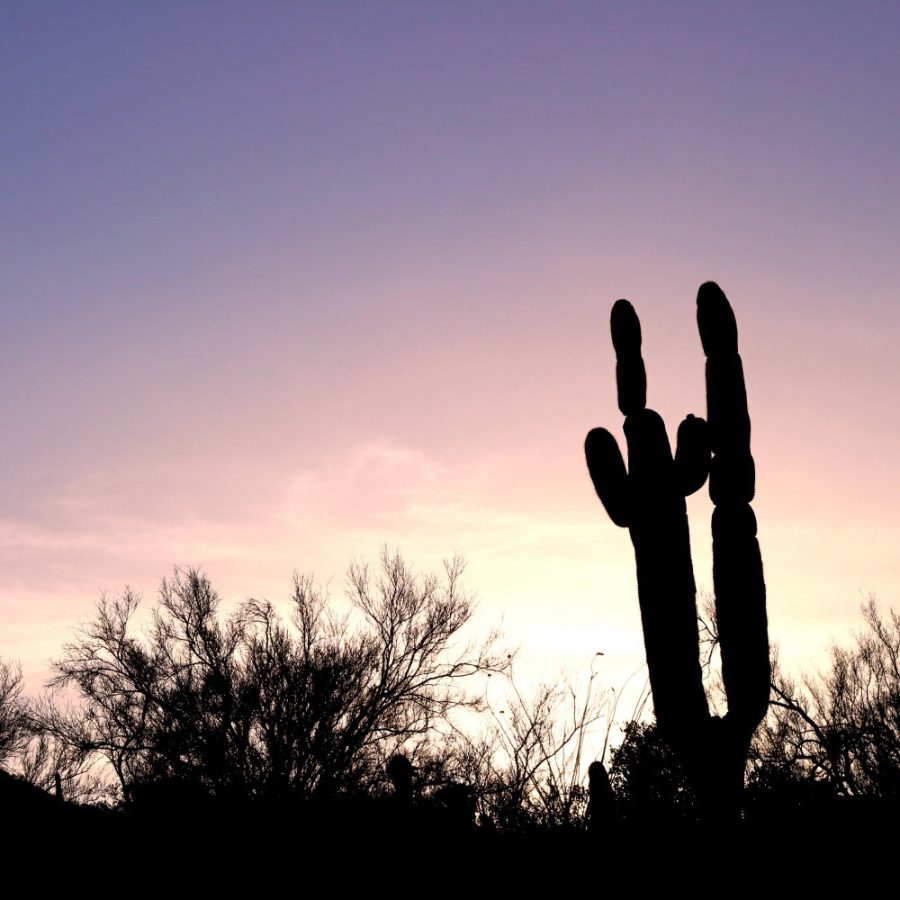Renowned for its beautiful hiking trails, Tucson’s wildlife caters to even the most hardcore of nature junkies.
While the trails range from flat, easy hikes to risky, off-the-beaten-path adventures, many hikers don’t know what to expect before they set off to trek the Tucson trails.
“I am a nature lover, and to observe and share aspects of the trails and plant life in Tucson with people is amazing,” said Heidi Schewel, a UA alumna who now works for the U.S. Forest Service.
Schewel works for the Coronado National Forest Service here in Tucson.
Schewel said that throughout Tucson trails, hikers can expect to witness an active variety of ecosystems.
“If people are hiking at lower elevation, they will experience plants that are used to arid weather, such as mesquite trees and brittle bush,” she said.
When hiking Mt. Lemmon, Schewel said that hikers will witness a shrub increase with rising elevation up the mountain, as well as experience plant life such as Douglas fir, New Mexico locusts and Rocky Mountain maple trees. Tanque Verde Falls on Tucson’s east side offers similar plant diversity.
RELATED: The saguaro cactus: A true gem of the desert
“When I hiked Tanque Verde Falls, I saw some yucca, saguaro cactus and some agave plants,” said Noah Steinberger, an information science and eSociety senior.
Schewel said that at this time of year, color changes are very widespread among the plant life on Tucson’s copious hiking trails.

“Jumping cholla are really prevalent on Tucson hikes,” said psychology senior and avid hiker Michael Burstein. “Every time I hike, I have to watch out for them because they are everywhere.”
As for animals, Schewel said that hikers can find a variety of species.
Schewel explained that at lower elevations, rabbits and reptiles are still active on trails. But as it warms up, hikers should expect to see more snakes, mourning doves and woodpeckers, as well was a number of migrating birds.
“I’ve seen many hawks and small critters,” Steinberger said. “I have also seen a few rattlesnakes.”
Desert creatures are not a rare sight to see on the Tucson local trails—many of the animals are essential to the ecosystems of the Sonoran Desert, which allows for hikers to feel completely are immersed in their environment.
Schewel said hikers should avoid interacting with wildlife at all costs.
“In higher elevation places, bears are preparing for winter rest,” she said.
Schewel said bears can recognize human food sources such as ice chests and can get into them if they are not
well stored.

To remedy this, she recommended picnickers and campers to put food in bear-proof boxes
“The best thing to do is to avoid the wildlife on trails and just view them from a distance,” Burstein said. “This is their home and we are just guests, so humans should make more of a point of respecting the animals and their territory.”
Burstein said he has seen a few mountain lions on his hikes throughout Tucson and described them as very majestic creatures.
RELATED: Welcome to the Dirty T: Marc Sanchez illustrates his way through life
Schewel said she wants students and locals alike to get out and visit Arizona’s wildlife, but urged all hikers be very conscious of their surroundings while enjoying the Tucson trails.
The wildlife and plant life throughout these trails are unique to the Sonoran Desert, which is what makes the hikes in Tucson such a novel experience.
“The ability to pack up and go hiking on any given day makes Tucson and its nature one of a kind,” Steinberger said. “The lack of civilians seen during the hike is also a positive. No one enjoys a crowded hike.”Follow Sarah Briggs on Twitter









